- Established 1982 -HOME: www.hiltonpond.org
THIS WEEK at HILTON POND Subscribe for free to our award-winning nature newsletter (Back to Preceding Week; on to Next Week) |
ANOTHER DIVERSE MAMMAL WEEK Little did we know on Groundhog Day 2000 when we published our first installment of "This Week at Hilton Pond" that in 2019 we'd be entering our 20th year still posting photo essays on the Web site for Hilton Pond Center. Nearly 700 of our musings are now on-line, permanently archived as reference info for students, teachers, scientists, and the general public. Here's what we wrote in that introductory edition back in 2000:
In years since, we've covered all sorts of flora and fauna and described noteworthy happenings here at our Center near York SC. Occasionally our wanderings have allowed us to photograph and write about nature in faraway places--from Central America to Japan to San Andres Island, and from New York State to West Virginia to California. Every installment also includes a list of birds banded or recaptured during the period, thus documenting our on-going, long-term research with bird life of the Carolina Piedmont.
We created "This Week at Hilton Pond" as a nature blog almost before the word "blog" (short for "Web log") was invented. In the old days it wasn't uncommon to have 2,000 readers visit an installment the week it was posted, but with the rise of Facebook and Twitter and a proliferation of other nature blogs our readership has diminished somewhat. Nevertheless, we remain committed to producing high-quality photo essays now and in future years in the hope they bring pleasure and factual information to an audience that shares our appreciation for the wonders of nature. So help us out, if you will, by introducing a friend or two or three to our Web site, and encourage them to Subscribe for free to our award-winning nature newsletter. We'll be happy to have them and welcome their feedback. Meanwhile, here at home we recently had encounters with a wide assortment of wild mammals--some seldom seen--as detailed below in installment #687 of "This Week at Hilton Pond." Happy Nature Watching!
All text, maps, charts & photos © Hilton Pond Center GROUNDHOGS? HARUMMPH! By now you may have heard the bewildering news out of Punxsutawney that Phil--the pampered and overweight Groundhog, Marmota monax, who purports to know the weather in advance--failed to see his shadow on the morning of 2 February 2019, thereby "forecasting" that winter is over and spring is on the way. Are you kidding? It's only February! For those of you who put faith in that Pennsylvania Woodchuck's meteorological pronouncements, let us remind you even Phil's handlers confess they decide the night before whether the charlatan rodent will be shadowed or shadow-less; based on their frivolous decision, they either turn the spotlights on, or off. This year they pulled the plug, leaving their hapless Whistlepig in the dark--BEFORE dawn. Less than six more weeks of winter? Counting from early February? Early spring is on the way? Come now, Phil, just how foolish do you think the public can be? It's a good thing we have Hilton Pond Harry to straighten out this mess. Harry, our perennially accurate White-footed Mouse (above), rose bright and early on 2 February at Hilton Pond Center and--bathed in brilliant sunshine--saw his shadow and immediately scurried back into his grass-lined burrow, realizing it was pretty darned chilly outside AND confident there would be at least another month and a half to go of winter weather. As much as we adore tradition we have given up on Punxsutawney Phil, knowing his predictions have become a shameless scam. We--and, we hope, you--follow the forecast ONLY of a certain Peromyscus leucopus, our beloved Hilton Pond Harry. This little mouse has not been wrong in 37 years, and we're more than certain his 38th prediction will prove spot-on. Keep your gloves and earmuffs handy, folks. It MAY warm up for a short while in early February, but--after that--winter WILL return. Just ask Harry. All text, maps, charts & photos © Hilton Pond Center
All text, maps, charts & photos © Hilton Pond Center Shortly after Hilton Pond Harry exited and re-entered his burrow on 2 February we did have a few days of warm weather at the Center--not an unusual occurrence even though it's still winter. The week before had been brutally cold with overnight lows in the teens and low to mid-20s, with many animals hunkered down. However, when temperatures rose and the sun came out later in February's first week, so did several of our enterprising Eastern Chipmunks, Tamias striatus (file photo above). These little seed-eating rodents--members of the Squirrel Family (Sciuridae)--are short-tailed and mostly terrestrial, although they're known to climb trees to get at fruit and occasionally rob eggs from bird nests. Eastern Chipmunks also eat insects, nuts, mushrooms, and snails, and are more or less omnivorous. At the Center they are gluttons for black sunflower seeds they stuff in their cheek pouches (above) before depositing the bounty in underground burrows. (Incidentally, Hilton Pond--near York County SC--is right at the southeastern edge of the historical range for this species. Eastern Chipmunks are far more common to our west and north.)
All text, maps, charts & photos © Hilton Pond Center Like distantly related Eastern Gray Squirrels, Sciurus carolinensis (file photo, above), chipmunks are not true hibernators. Typically during deep hibernation, organisms lower their metabolic rates and stay dormant for weeks--even months--at a time. This is different from the behavior of local chipmunks that sleep for a day or two, wake up, and feast on seeds in their larder. (Think about it: Would chipmunks gather and store food if they underwent long-term hibernation and couldn't dine on their hoarded nuts and seeds?) Our local squirrels have similar behavior, although they tend to stay active year-round at Hilton Pond--apparently not even bothering to cache food for the winter. They are out and about even on our coldest days. We wonder if the Center's squirrels would behave this way in the absence of the abundant seed mix available at our well-stocked bird feeding stations.
All text, maps, charts & photos © Hilton Pond Center Given a chance, we suspect the Coyote, Canis latrans, captured this week on one of our trail cams (above) wouldn't turn up its nose at either chipmunks or a squirrels (or even a Groundhog, if we had any). Fortunately for these potential prey items, our local carnivorous Coyotes seem to be almost exclusively nocturnal; at night the tasty little rodents are safe in burrows or up a tree while Coyote packs are prowling, and howling. Although Coyotes were first reported in the South Carolina Upstate in 1978, we never detected them at Hilton Pond Center until the late 1990s--and by "detected" we mean "heard" and not "seen." The first evidence we had for Coyotes in the area came when they sang at night; we still haven't seen one with naked eye and relied upon a trail cam shot in June 2016 to finally confirm they were on the property. These days we often get midnight cam shots like the one above and frequently hear what must be two or three family groups vocalizing harmoniously after dark on neighboring farmland. (NOTE: Shortly after Coyotes arrived at the Center our local population of Wild Turkeys plummeted--likely a cause-and-effect relationship. Alas, these wild dogs have become so plentiful we've also had to terminate running mist nets at night during winter months--thus canceling our Northern Saw-whet Owl banding project.)
All text, maps, charts & photos © Hilton Pond Center Coyotes are more likely to take smaller items such as rodents and rabbits; nonetheless, we suspect they occasionally prey upon White-tailed Deer, Odocoileus virginianus, that roam the woodlands around Hilton Pond Center. A healthy, full-grown doe like the one our trail cam documented this week (see photo above) isn't likely to be eaten by Coyotes, but a newborn fawn certainly could be (see photo below from a previous spring). As with our turkey flocks, the deer population at the Center has dropped in recent years--perhaps circumstantial evidence that Coyotes are a factor in lowering numbers of more than one wild species. (We're pleased the number of feral cats is also down. Free-roaming felines are reportedly a favored food source for Coyotes, so whatever native prey these wild dogs eat may be compensated for by their elimination of ownerless cats known to slaughter huge numbers of small animals for "sport.")
All text, maps, charts & photos © Hilton Pond Center White-tailed Deer also succumb to injury from encounters with motor vehicles. This week another doe was dead in the ditch in front of Hilton Pond Center, its legs broken by impact with a vehicle undoubtedly moving far too fast in a well-posted 35 mph zone. The carcass sat there for a few days until Black Vultures discovered it and started pecking away at its hindquarters. (Who knows how many unfortunate animals lie undetected after being killed by speeding cars and trucks on our little two-mile stretch of highway?) Paw prints in the mud around the roadkill deer indicated yet another mammal was present--an opportunistic Virginia Opossum, Didelphis virginiana,
All text, maps, charts & photos © Hilton Pond Center Joining our marsupials on their nighttime sorties were any of several Raccoons, Procyon lotor, that saunter through the Center's backyard, stopping to drink from little artificial pools (file photo, above) before moving on to compete with the 'possums for leftover bird food. Each year local 'coons decimate our water garden frogs that spent all spring and summer metamorphosing from tadpole to adult, so they're forced to scavenge around for whatever else they can find. Raccoons seem to like shell corn almost as much as our Hilton Pond squirrels, but we suspect they spend a lot of time down at the pond itself--probing around for crayfish and salamanders and whatever other morsels they might find.
All text, maps, charts & photos © Hilton Pond Center Although we didn't see any this week (the photo above is from a previous encounter), we are absolutely certain there was at least one Striped Skunk, Mephitis mephitis, very close to the Center's old farmhouse. Our olfactory nerves jolted us awake one night as a skunk wandered past a bedroom window that--despite being closed and locked tight--still allowed the unmistakable smell of skunk musk to drift through. It's hard to believe an odor so noxious to humans and other animals could be an attractant for amorous skunks intent on raising stinky youngsters. Other than turtle eggs they claw up from the banks of Hilton Pond in late spring and early summer, we're not sure what skunks eat as they patrol our property, but there are so many of them they must be able to get their fill of plant matter (nuts, roots, berries, fungi, etc.) and living or dead animal prey (invertebrates such as grubs and insects and earthworms, plus vertebrates that include ground-nesting birds and eggs, moles, small reptiles and amphibians). Sounds like another omnivore in our midst, and one that digs a lot. All text, maps, charts & photos © Hilton Pond Center (Click on chart above for a larger version in a new browser window) By the way, for folks who took a mammalogy course in ages past but haven't kept up with taxonomic changes, you might be surprised to know skunks are no longer placed in the Weasel Family (Mustelidae). Recently, morphological and DNA studies led scientists to split them out into their own Skunk Family (Mephitidae, see chart above). We're just thankful mammalian taxonomy hasn't changed as extensively as ornithology's in recent years.
All text, maps, charts & photos © Hilton Pond Center And speaking of mustelids, our most surprising experience with the Weasel Family this week came when we got a rare sighting of TWO North American River Otters at the Center. But first, a little background, as described in the 16 December 2018 installment of "This Week at Hilton Pond."
All text, maps, charts & photos © Hilton Pond Center
All text, maps, charts & photos © Hilton Pond Center After that December sighting, we never saw the otter again until this week on 3 February when we looked out at the pond and noticed one swimming with only its head out of water (above). Held aloft in its mouth was a sizable fish with a bright yellow-orange belly.
All text, maps, charts & photos © Hilton Pond Center The otter disappeared from view and then suddenly hoisted onto the dock from the far side, that still-wiggling fish tightly clamped in its mouth. Its fur wet and very sleek (above), the otter flattened out on the wooden planks of the pier and started gnawing on the fish--tail end first--deftly holding the food item between its five-fingered front paws. The otter continued eating until almost nothing was left of the fish but backbone, plus a discarded carpet of shiny scales on the dock. Having studied the photo above, we conclude the prey was a good-sized Bluegill, Lepomis macrochirus (aka Brim or Bream)--although our expertise with piscine identification via photos taken over a distance could use some work. (Veteran fisherpersons may want to chime in on this one by sending us a confirmation--or a better I.D.--at INFO.)
All text, maps, charts & photos © Hilton Pond Center We watched the otter groom for a quarter hour before stepping away from the office window for a few minutes. When we returned we were startled to see not one but TWO otters on the dock. The first had finished its lunch and was rubbing its back on the slats, likely to dry off and smooth its fur. The second otter was still soaking wet, indicating it had just emerged from the pond. We watched a while longer until both otters slid off the dock and out of view. Sometime later that morning we saw large ripples on the pond surface just before one otter clambered back onto the pier; the other soon followed with a smaller fish in its jaws. After shaking excess water from its pelt, the second animal offered the fish and the first otter accepted it--a gesture we strongly suspect was courtship feeding.
All text, maps, charts & photos © Hilton Pond Center The two otters nuzzled and cuddled for about ten minutes, rolling of top of each other and fake-biting. One was noticeably larger and was, we suspect, a male (at left in photo above). There is size dimorphism among river otters, with mature males weighing up to 30 pounds and fully grown females perhaps 25% less. Assuming this is a mated pair and the fish supply holds out, we might expect our otters to find an old Muskrat den on the banks of Hilton Pond in which the female can give birth and nurse her kits. Otters don't excavate their own burrows, so if suitable lodging does not exist here they undoubtedly will move on down the watershed from one pond to the next, looking for an appropriate den site. We would expect birthing by late spring--although North American River Otter females can delay implantation of fertilized eggs until developmental conditions are optimal. All we can do is sit and wait, hoping for more frequent glimpses of otters as they swim and fish at Hilton Pond.
All text, maps, charts & photos © Hilton Pond Center From mice to mustelids, this first week in February 2019 did indeed provide a diverse representation of Class Mammalia at Hilton Pond Center. We observed nine species and nine genera described above, as classified in the following taxonomic groups: Eight Families Four Orders (NOTE: Virginia Opossums--North America's only pouched mammals--are in Infraclass Marsupialia.) Nine mammalian species was a pretty good total for a ten-day span on an 11-acre site in February, but that number was less than a third of 31 different mammals recorded at Hilton Pond Center during 38 years of observations. For a peek at our full list, see Animal Inventory: Mammals. We're still hoping to encounter several native species possible for the area, including Bobcat, Gray Fox, Black Bear, and any of several bats, shrews, and small rodents or weasels. (We're unlikely to see any of the latter three secretive creatures unless we bait live traps in nearby woods and meadows, and the bats probably won't show unless we accidentally catch them at dusk in mist nets deployed for bird banding work.) Who knows, we may even get a Groundhog who tries to challenge the weather forecasting prowess of Hilton Pond Harry! Whatever mammalian species comes next, however, we probably won't be more surprised than this week when we first saw TWO North American River Otters frolicking on the dock--right here at Hilton Pond Center for Piedmont Natural History. All text, maps, charts & photos © Hilton Pond Center
Checks also can be sent to Hilton Pond Center at: All contributions are tax-deductible on your Don't forget to scroll down for Nature Notes & Photos, |
|---|
|
"This Week at Hilton Pond" is written and photographed by Bill Hilton Jr., executive director of Hilton Pond Center for Piedmont Natural History
|
|
|
Please refer "This Week at Hilton Pond" to others by clicking on this button: |
|

 unlike Groundhog weather maven Punxsutawney Phil--it WILL be staying up for the remaining six weeks of winter, and for a long time thereafter! :-)
unlike Groundhog weather maven Punxsutawney Phil--it WILL be staying up for the remaining six weeks of winter, and for a long time thereafter! :-)
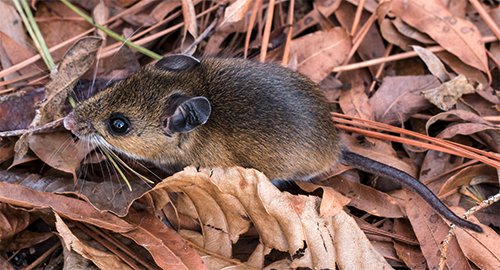
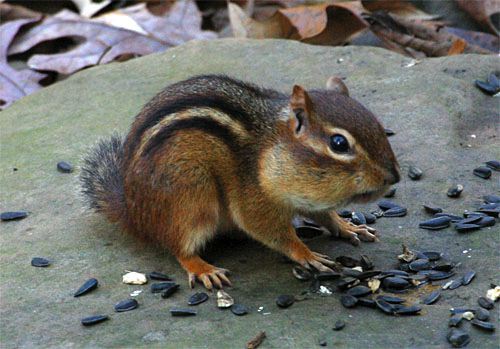
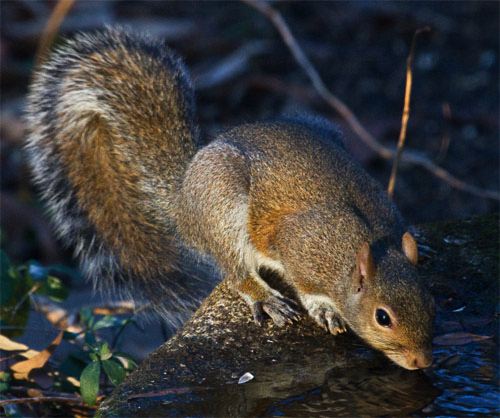
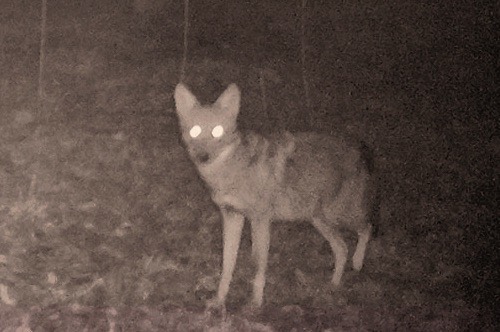
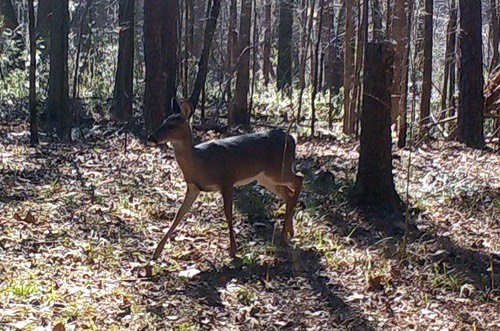
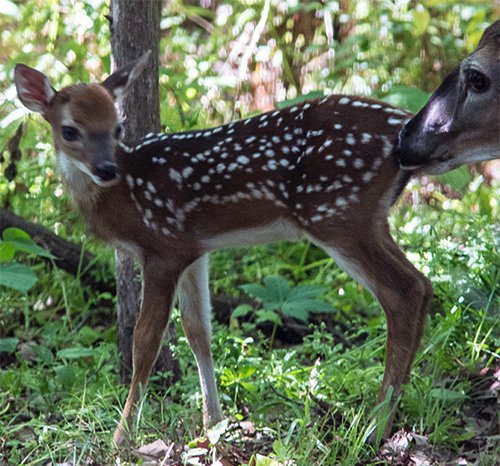
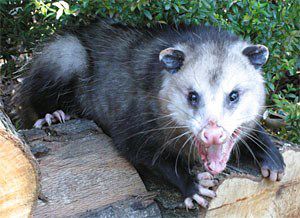 also making use of this protein-rich food source. We see 'possums almost daily
also making use of this protein-rich food source. We see 'possums almost daily 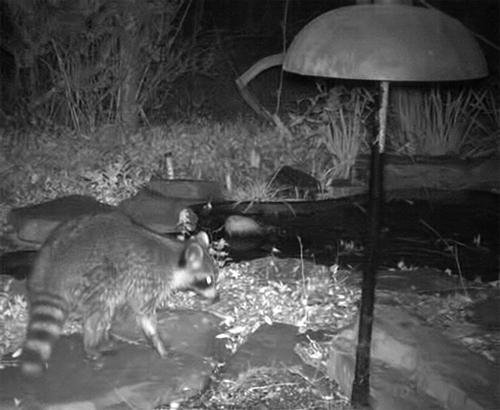
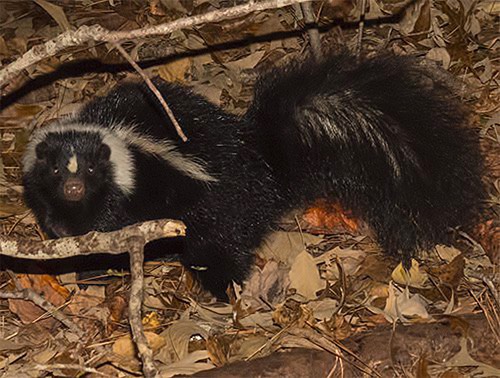
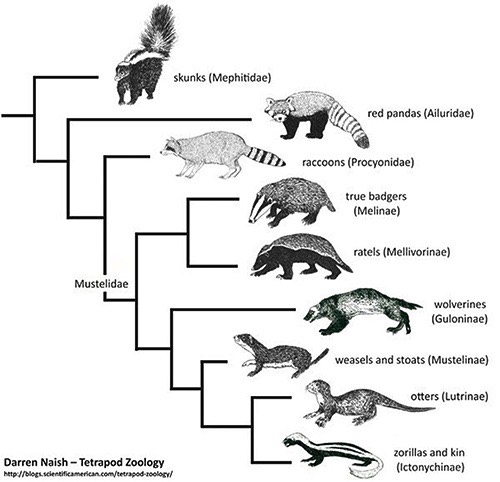
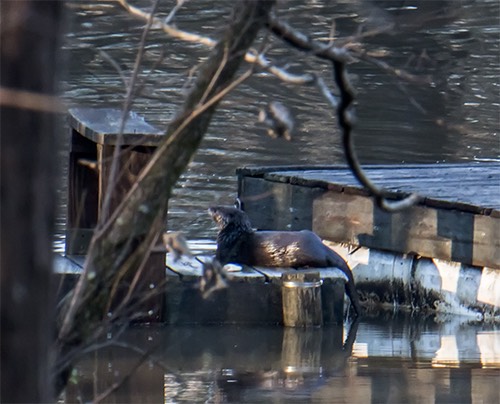
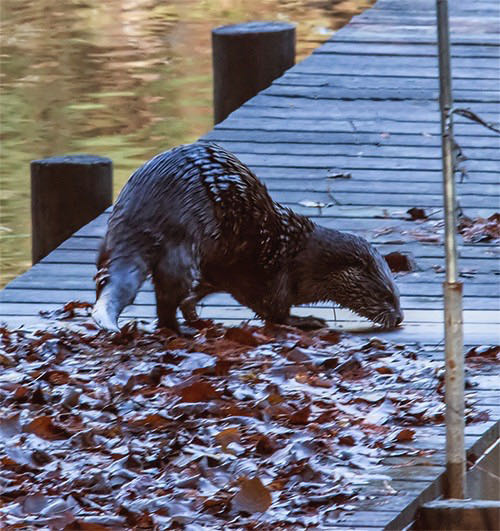
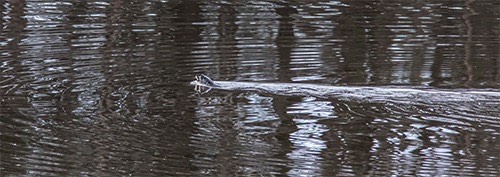
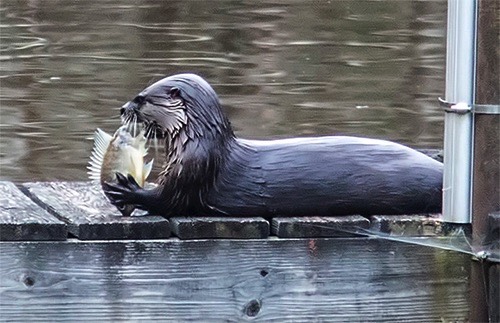
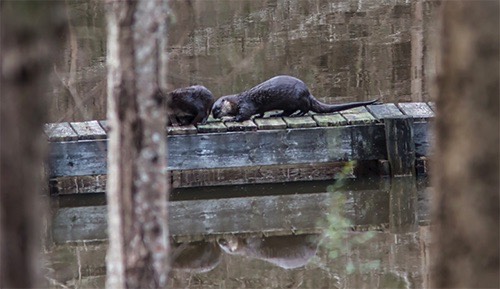
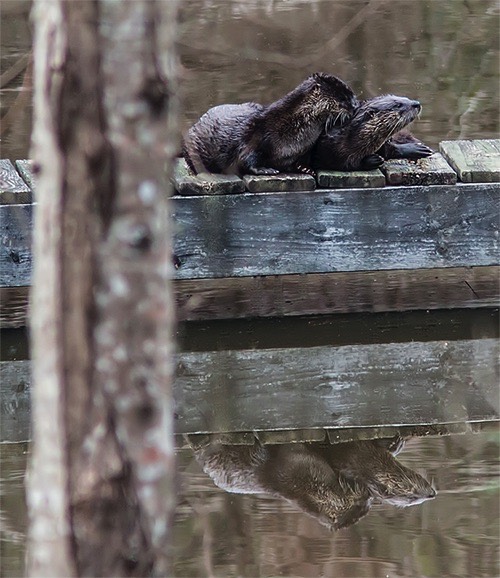
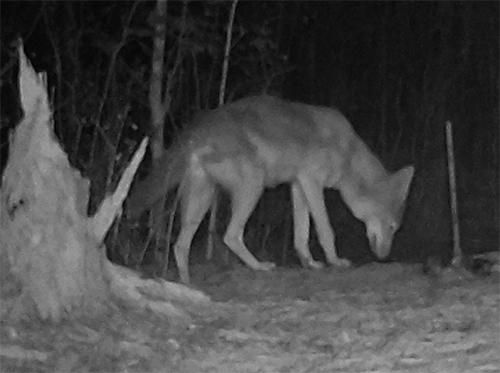










 Oct 15 to Mar 15:
Oct 15 to Mar 15: